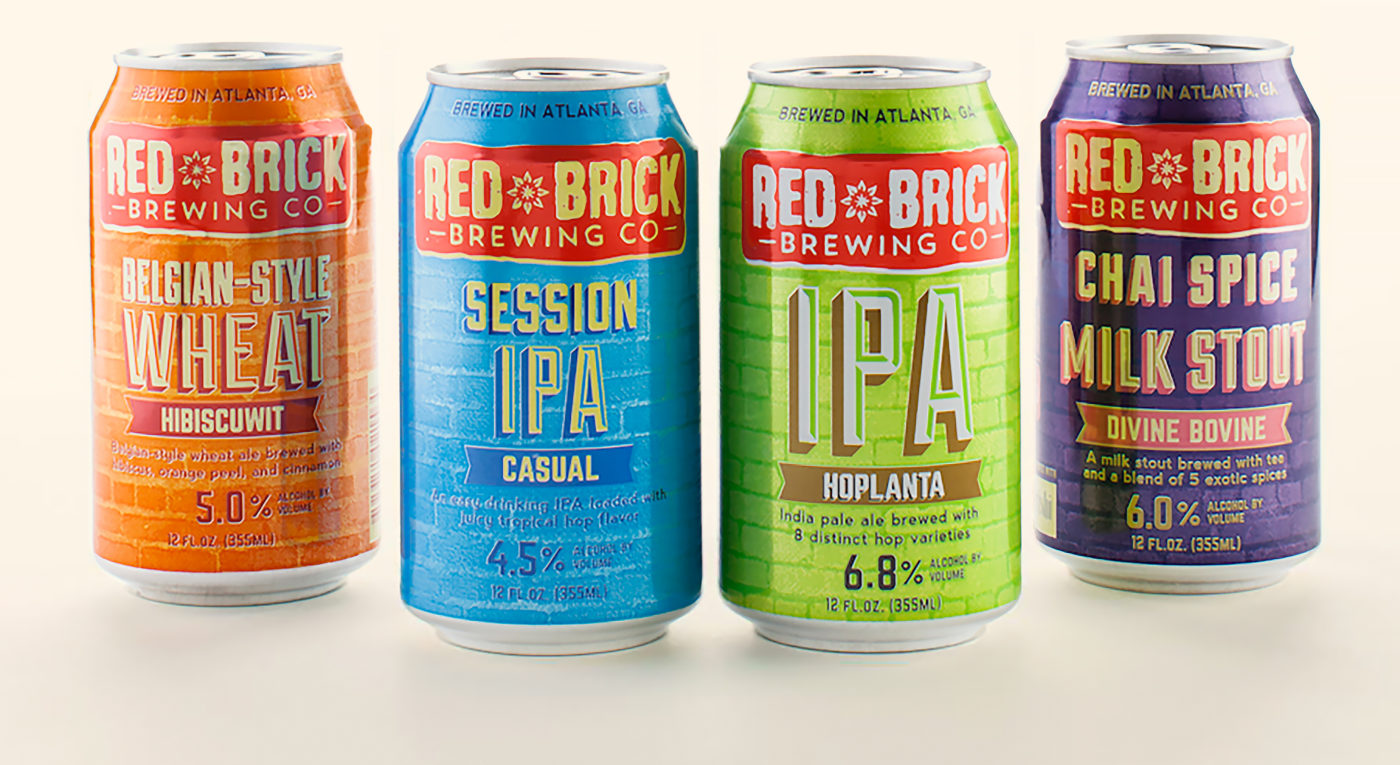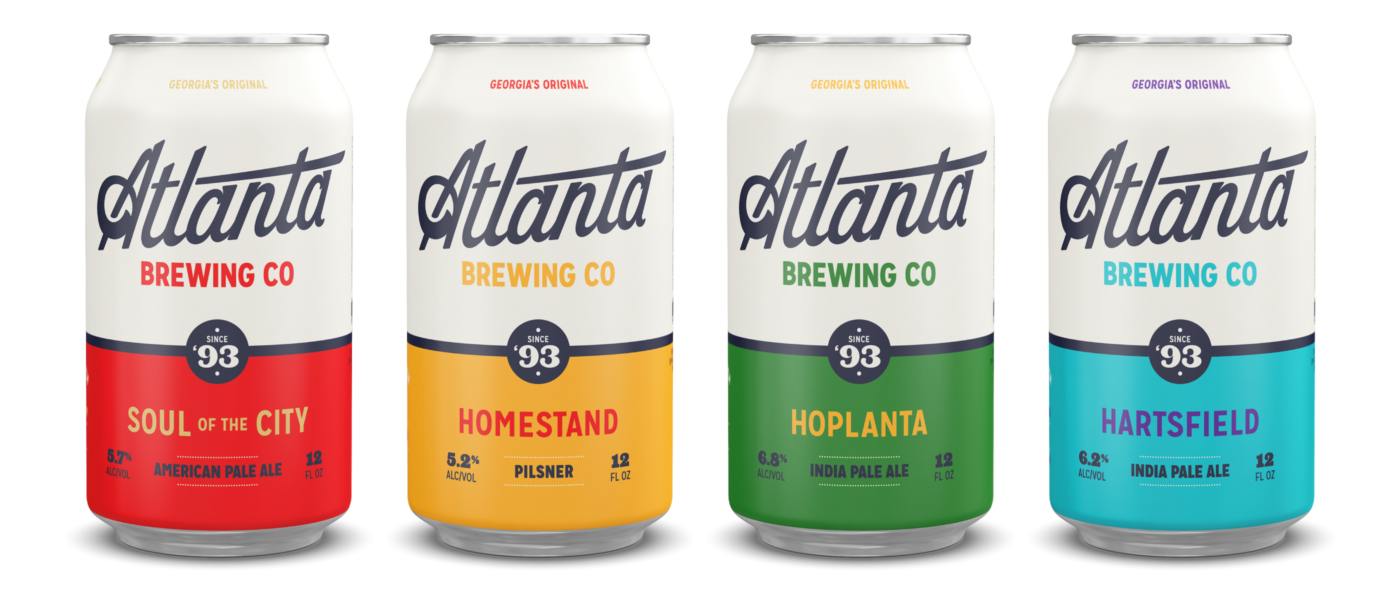Add to this frustrating equation the fact that for the last decade, larger regional breweries have been getting squeezed from both ends of the market. New breweries are stealing away off-premise sales and creating more buzz and excitement, while Big Beer (including other large craft breweries) have been driving down prices through their vast distribution networks and volume play. All of this begs the same set of questions:
Stories
Rebranding Atlanta Brewing Co
BREATHING NEW LIFE INTO GEORGIA’S ORIGINAL CRAFT BREWERY
We’ve all seen the same story play out across many different industries: a new indie band / restaurant / brewery comes onto the scene and everyone is enamored. Then its luster begins to wane as more and more people flock to this new ‘thing’. As that indie band releases its third album and starts playing larger venues, as that small craft brewery adds a few more 60bbl fermenters and launches into new markets, people start to lose that cozy feeling of intimacy you get when you discover something new. In becoming more well known, the experience of going there is no longer a special thing between you and your friends, and alas, the thrill is gone.
We’re now seeing this happen at such a fast clip that in some markets, breweries that opened just five years ago are now considered the Old Guard. And, if that’s the case for breweries that have only been at this for a few years, imagine how a craft brewery with 10, 15, or 20+ years under its belt is feeling.

-
How can a brewery grow while remaining relevant to its fans?
-
How can a brewery stay enmeshed in its local community as it expands into different markets?
-
How can a brewery continue to call its product “craft” if it makes 15,000bbls (or 30k, or 70k, or…) per year? Or, can it?
So with this scene set, what’s an older brewery to do?
Atlanta Brewing’s founding story is not unlike the lore of other legacy breweries—located in an old brick warehouse in a rundown part of town, brewery cobbled together with old dairy and brewing equipment from England, bootstrapped beyond belief but hell bent on making the best beer possible
Atlanta Brewing was founded in 1993. At that time, there were only about 200 “microbreweries” and brewpubs throughout the entire United States (there are more than 6,600 today). There was no Brewers Association, and home brewing was still largely illegal across the country. Dr. Dre was all over the radio, Michael Jordan was dishing up L’s to everyone he faced, I was seven years old—it was a long time ago.
Atlanta Brewing’s founding story is not unlike the lore of other legacy breweries—located in an old brick warehouse in a rundown part of town, brewery cobbled together with old dairy and brewing equipment from England, bootstrapped beyond belief but hell bent on making the best beer possible, etc.
While Atlanta Brewing enjoyed a lot of growth over the next 15 years, they also ran into a few bumps in the road. They had to move to a new facility due to an imminent domain highway project from the city and of course, they had to weather the economic downturns that all businesses face. Another challenge was that like all legacy breweries, they’ve had to contend with the tide of cool, high-energy startups fighting for shelf space and mind share.


Build a stronger brand.
Sell more beer.
Join 7,500+ other beer industry folks and sign up for our monthly Beer Branding Trends Newsletter.

Beer Branding Trends 2.0
All of these issues came to a head in 2010 when, in a misguided attempt to respond to them, the brewery changed its name from Atlanta Brewing to ‘Red Brick Brewing’ (named after their best-selling ‘Red Brick Ale’). On top of running away from a fantastic name, the rollout and subsequent packaging changes weren’t handled well. A few agencies took stabs at revamping everything, but as is the case with rebranding, unless there’s a core internal change; unless there’s a fundamental shift in positioning, vision and values, a rebrand is nothing more than window dressing.
Over the last four or five years, Red Brick began the long process of climbing back and working to regain their previous market share. They named a new President, Garett Lockhart, who immediately began assembling a dream team. One of his first moves was bringing on Cameron Davis to revamp their marketing. Then, he found a great sales guy, Matt Wells, with years of experience selling big craft brands, and finally, he brought on a renowned brewer in Gavin McKenna. Then, they squared away operations by promoting (from within) Andy Sadler, and continued to round out the brewing and sales team. We’ve worked with nearly fifty breweries now, and this is one of the most squared away groups we’ve ever had the privilege of partnering with.
On top of all this, a recent change in Georgia brewing law made it legal to sell beer directly to consumers through an onsite brewery tap room (join me in welcoming Georgia to 2018!). This means a large regional brewery like Red Brick that has to dedicate a lot of time to brewing flagship beers, can spread its wings and create a vibrant tap room experience by brewing whatever they can dream up without being driven solely by what will move off-premise.

We presented two brand directions—one that centered around a classic script typeface (one part vintage Atlanta sports, one part aeronautical) and another that was more iconic and industrial (and a subtle nod to their original, 1993 mark).
The Atlanta Brewing team immediately fell in love with the classic script direction—particularly the confident ‘Atl’ icon. This decision made, we went on to spend a million hours (rough estimate) refining the custom script typeface and secondary / tertiary icon system. Once that was wrapped, we designed their flagship packaging, developed a seasonal can template, responsive website, environmental design, festival kit, sales material, merch and tap handles.
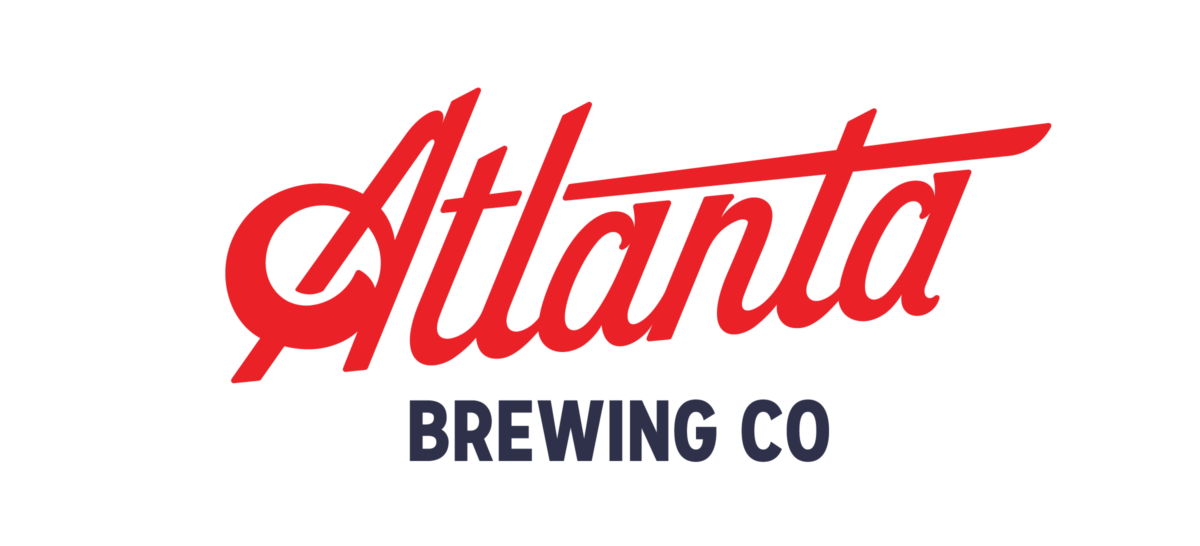
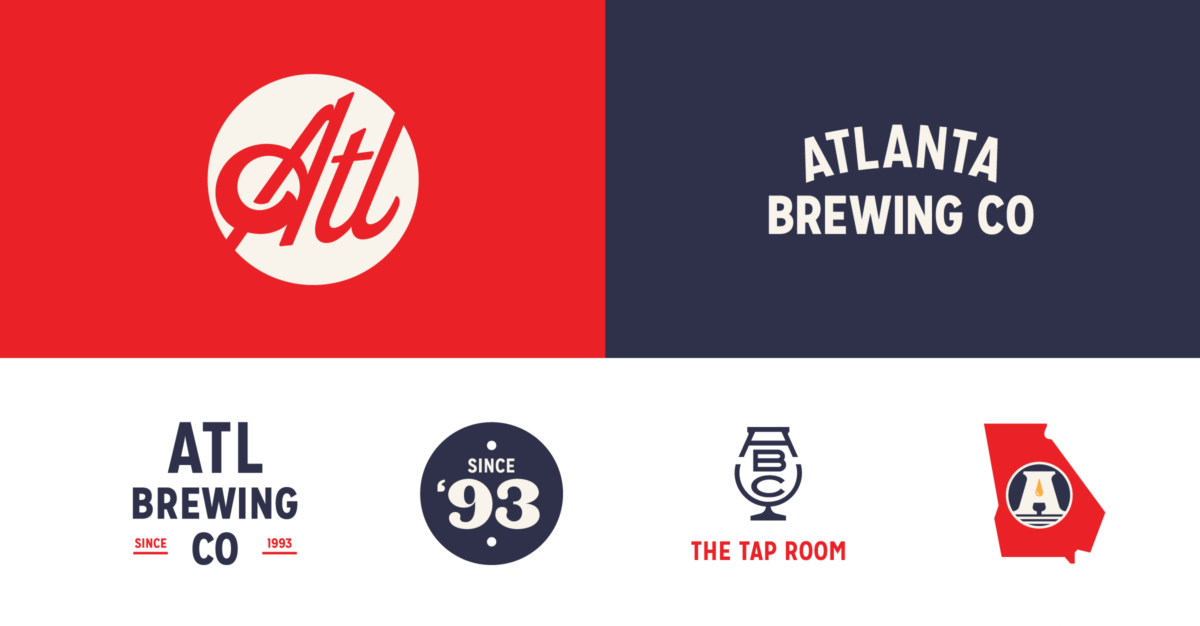
The final Atlanta Brewing brand identity system was designed to be used across multiple channels, from packaging and digital, to merch and environmental design. We created a system that was consistent enough to hang together as the brewery team puts it to use, but loose enough that it doesn’t become stale and repetitive over the next several years.
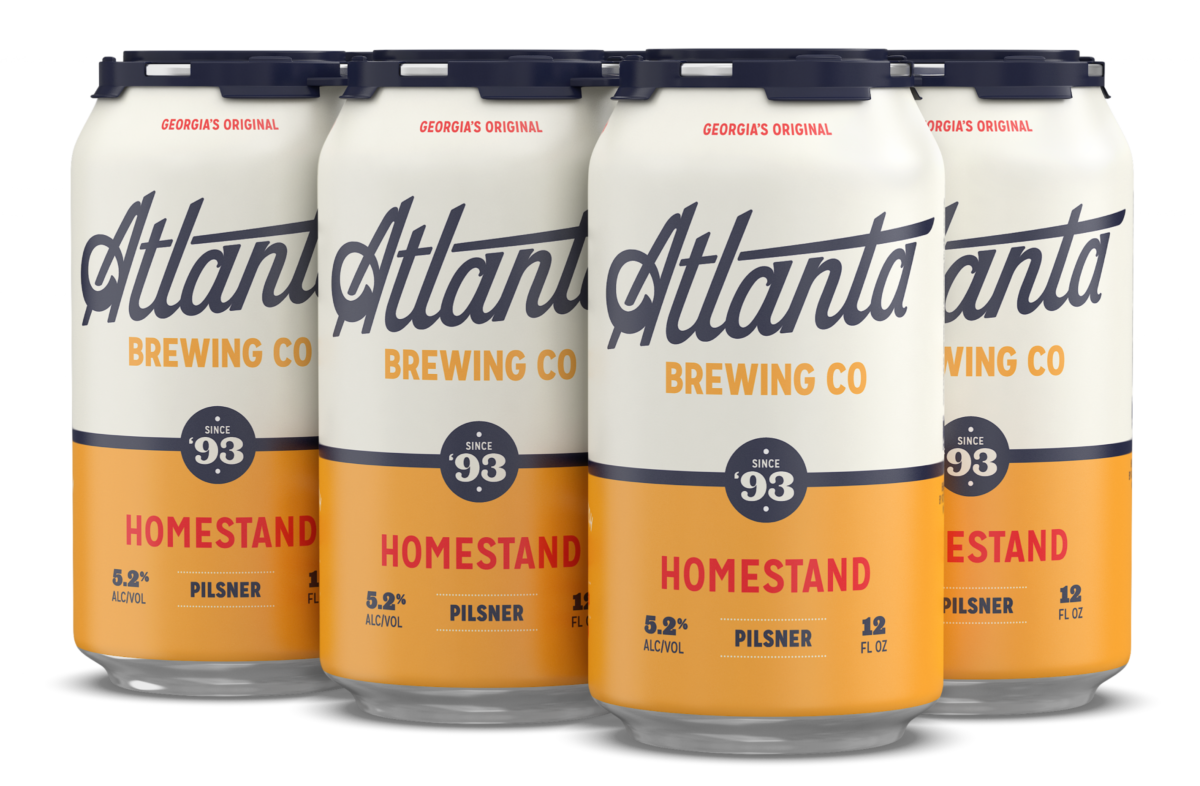
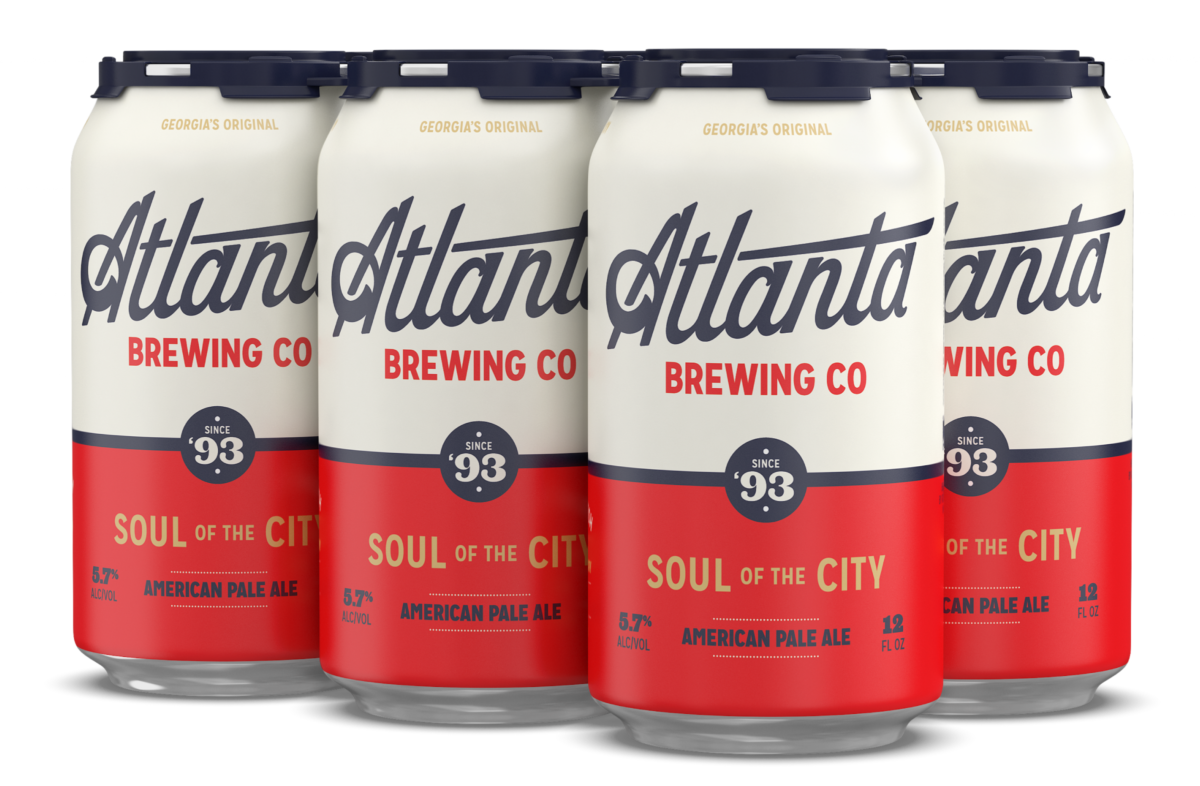
Atlanta Brewing’s flagship cans feature a ‘duped’ design, essentially giving it no ‘front’ and ‘back’. Since we weren’t using a box, we wanted to create something that would avoid the facing issues you get with six-pack carriers in a retail setting. This way, if a can spins around, you’re still able to see who the brewery is and what style you’re grabbing.

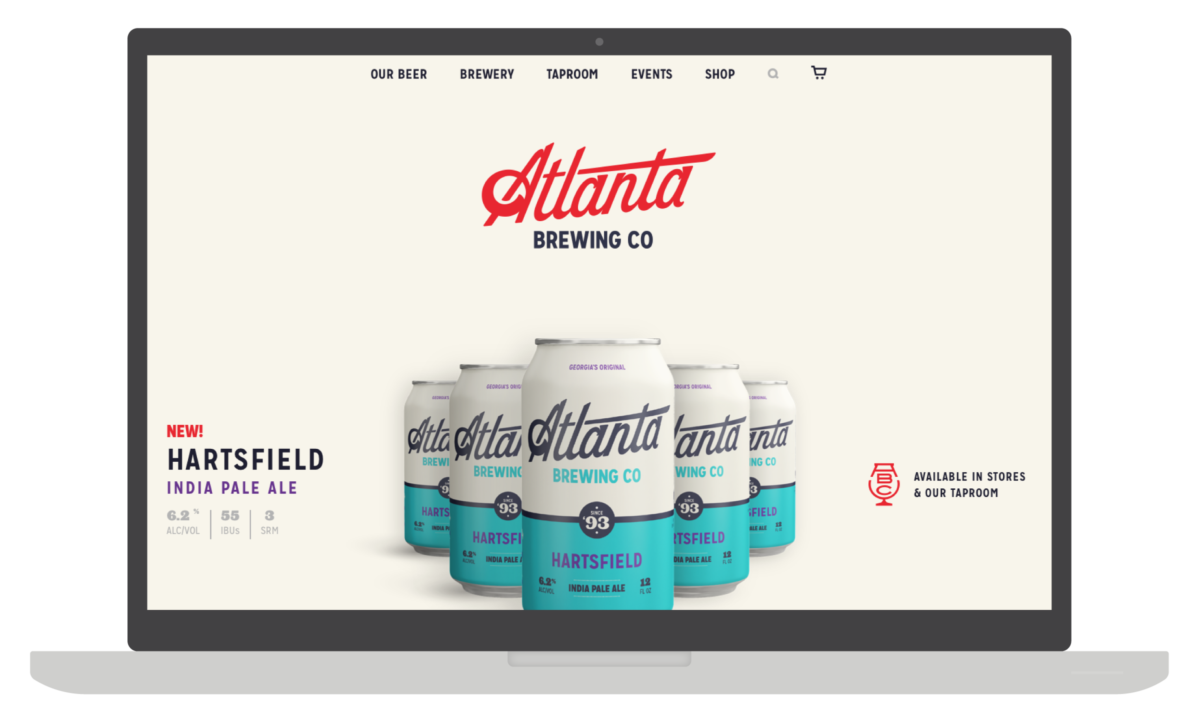


Atlanta Brewing Company’s new website is home base for all their promotion and includes a 25-year timeline, tap list, a robust events calendar (including a way for folks to book an event), and a full eCommerce store. This was all completely custom-designed and responsively developed using WordPress. After a user tutorial, the Atlanta Brewing team was able to take over the site and run things without needing to know any code or having to pay us (or anyone else) to make updates. This leaves them with more time to focus on brewing great beer.
One of the most important aspects to consider when rebranding a brewery is how you announce the change to the community. There will always, ALWAYS be a contingent of people who hate the update (and if that bothers you as a brewery, imagine what it does to us snowflake designers). If not handled properly, the change can leave people confused (I loved what they were doing, is their beer going to change? Was I wrong for liking their old cans?). And increasingly, in-the-know beer fans may be weary of private equity investment / a big corporate buyout / etc.
By developing a proper promotion plan, you can get out ahead of this and generate a lot of buzz and excitement leading up to the new brand launch. With Atlanta Brewing, we developed a series of teasers to be used across their social channels beginning about six weeks out and ramping up in volume as we drew closer to the big day. People caught on pretty quickly and it was fun watching as the community engaged with the idea of their favorite brewery becoming new again and began voicing their opinions—“Hurry up and share it!” or “Hmmm, smells like a rebrand. Can’t wait to see it.” or, “I already hate it.” Terrific…
This approach was successful in landing several major feature articles in the Atlanta press and prominent industry blogs, and I imagine it will only get more coverage as they lead up to their official 25-year anniversary party on September 29, 2018.


A few of our favorite social promo pieces from the brand launch campaign.
Can a brewery remain ‘authentic’ while growing? Can it remain true to its values while aggressively launching new markets? Can a regional brewery breathe new life into its brand and story when it seems that every force is working against it?
Yes.
If you have the right team assembled and you’re making the best beer you can, then you can tell a wonderful story to both old fans and new ones alike. It was an honor working with the Atlanta Brewing team and we’re looking forward to seeing what they accomplish over the next 25 years.
***
POSTSCRIPT
One year after launching Atlanta’s rebrand, we had a chance to sit down with their team and discuss how everything has gone since the rebrand. You can read the conversation here.
As a preview, their core beer sales are up by more than 26% and merch sales are through the roof. These figures are exciting, and are continuing to trend up as more people become aware of the new packaging hitting shelves across Georgia.
###
In March 2020, Atlanta Brewing’s marketing director, Cameron Davis, was interviewed on the BrewBound Podcast. It’s a great, behind the scenes look at the client side of a rebrand (and will give you a look at what it’s like to work with CODO).


Build a stronger brand.
Sell more beer.
Join 7,500+ other beer industry folks and sign up for our monthly Beer Branding Trends Newsletter.

